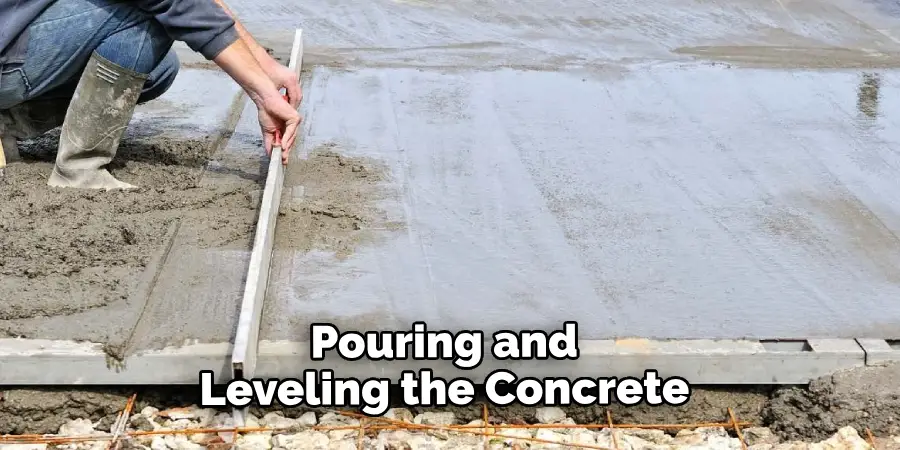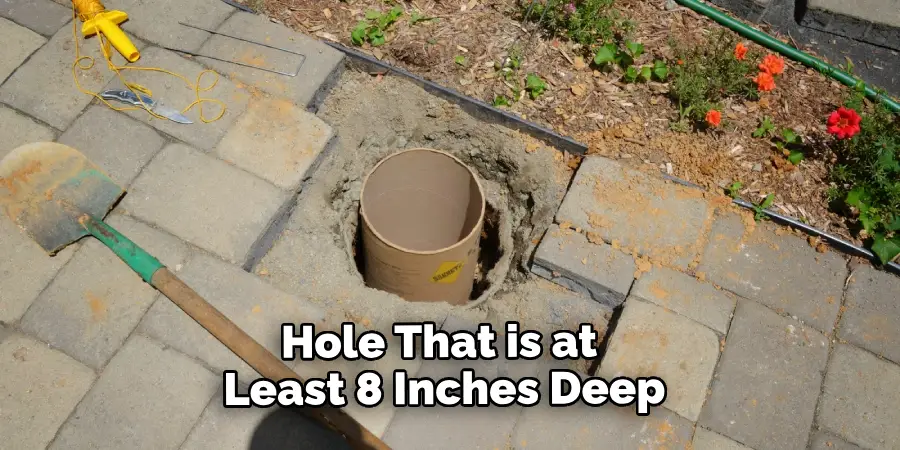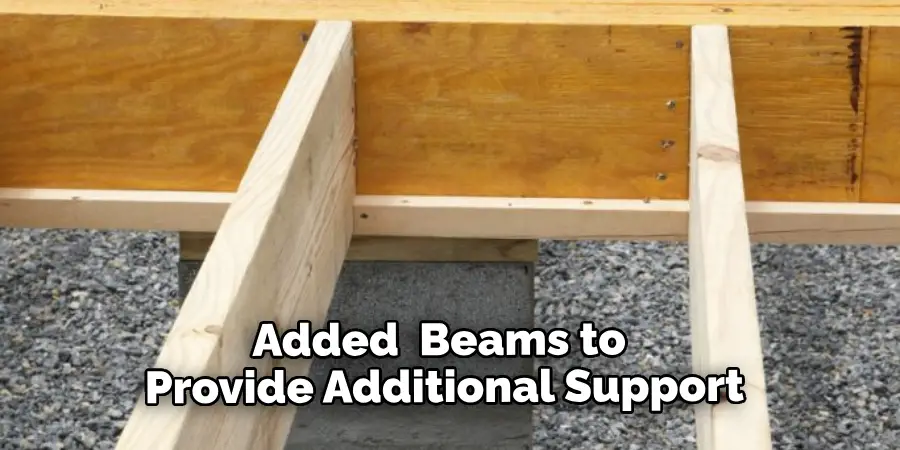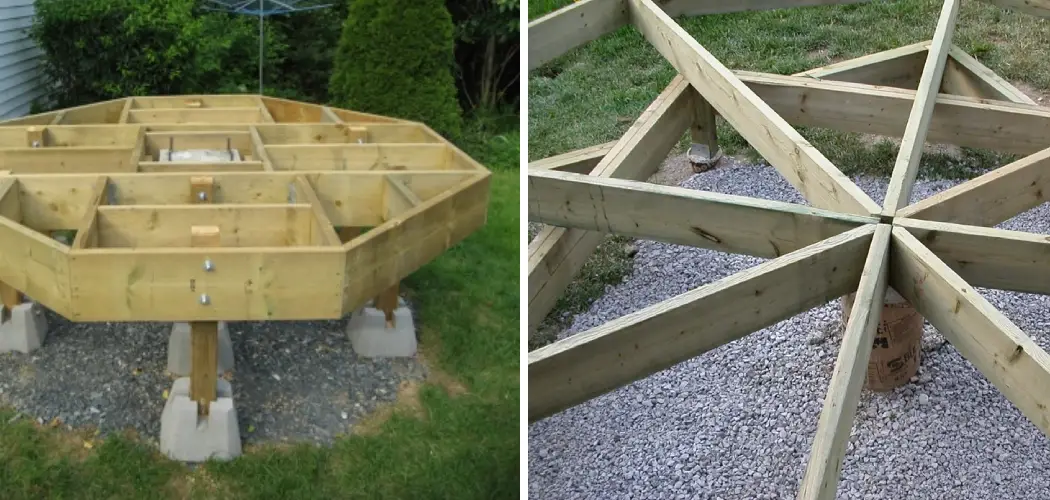Building a gazebo is a wonderful way to enhance your outdoor living space, creating a charming focal point for relaxation, entertainment, or simply enjoying the beauty of nature. However, the success and longevity of your gazebo project hinge on one critical element: the foundation. The foundation not only provides stability but also ensures that your gazebo remains level and secure against the elements. Whether you’re planning a DIY gazebo build or enlisting professional help, understanding how to construct a solid foundation is essential.

In this comprehensive guide, we will walk you through the step-by-step process of how to build a gazebo foundation, covering everything from site preparation and material selection to construction techniques and essential tips. With the right foundation, your gazebo will stand the test of time, offering a picturesque and functional addition to your outdoor oasis for years to come. So, let’s dive into the details and lay the groundwork for your gazebo-building adventure.
The Importance of a Solid Gazebo Foundation
Once you have chosen the perfect spot to build your gazebo, it is important to ensure that you create a solid foundation for your structure. A strong foundation will help ensure that your gazebo remains stable and safe for years to come.
Before beginning any work on the foundation, it’s important to be aware of any local building regulations that may apply to your project. Your local municipality may have specific requirements for the type of foundation you need to use, as well as how deeply it must be set into the ground. Additionally, if your gazebo will be near or over any utility lines, you should check with the local utility companies to ensure that you are in compliance with their regulations.
Once you have done your research and obtained the necessary permits (if applicable), you can begin work on building your foundation. The most common type of foundation used for gazebos is a concrete slab. This type of foundation is relatively easy to construct, as it only requires pouring and leveling the concrete. If you choose this option, you should ensure that the area is properly prepared for the pour, including laying down a layer of gravel or sand and reinforcing the edges with boards or bricks.

Selecting the Ideal Location for the Gazebo
When selecting the ideal location for your gazebo, consider certain factors such as access to sun or shade, protection from wind and other elements of weather.
You should also ensure that your gazebo is in an area where it can be easily enjoyed, such as near a pool, backyard patio or outdoor kitchen. Additionally, you should also make sure there is enough room around the gazebo for guests to move freely without obstructing other areas.
While selecting the ideal location, it’s important to consider future plans for the area, as the gazebo will need to be able to accommodate any changes you make. Finally, you should also take into account legal restrictions and zoning regulations in your area that may affect where you can build.
10 Methods How to Build a Gazebo Foundation
Digging the Footings
The first step in building a gazebo foundation is to dig the footings. This involves using a shovel or other digging tool to dig a hole that is at least 8 inches deep and 12 inches wide. The footings should be placed at least 6 feet away from any existing structures, such as buildings or trees. Once the holes are dug, you can then fill them with concrete and let it dry before moving on to the next step.

Installing Rebar
Once the footings have been dug and filled with concrete, the next step is to install rebar into each footing. A rebar is a type of steel reinforcement bar that provides additional strength and stability to the foundation of your gazebo. It should be placed in each footing before the concrete has fully dried so that it will bond properly with the concrete.
Laying Out Your Foundation
After installing the rebar, you should lay out your foundation using stakes and string or mason’s line. This will help ensure that your gazebo is built on an even surface and will also help you determine where to place your posts and beams for maximum support. You should also take measurements of each corner so that you can ensure that all four sides are equal in length when constructing your gazebo frame.
Pouring Concrete
Once your foundation has been laid out, it’s time to pour concrete into each footing hole around the perimeter of your gazebo frame. Make sure you use enough concrete so that it reaches up at least 4 inches above ground level once it’s dry. Once this has been done, you can then begin constructing your gazebo frame on top of this foundation layer of concrete.
Installing Posts
The next step in building a gazebo foundation is to install posts into each footing hole around the perimeter of your frame using lag bolts or other fasteners appropriate for wood-to-concrete connections (such as Simpson Strong-Tie). Make sure each post is level before securing it with lag bolts or other fasteners, as this will ensure a stable base for your entire structure once construction is complete.

Securing Beams
Once all of your posts have been installed, you can begin attaching beams across them in order to create a sturdy base for your structure’s roofing system and walls (if applicable). Beams should be connected together using metal brackets or other fasteners appropriate for wood-to-wood connections (such as Simpson Strong-Tie).
Make sure all beams are level before securing them in place with brackets or other fasteners, as this will ensure an even surface for constructing walls (if applicable) later on down the line when completing construction on your gazebo project.
Adding Bracing
In order to provide extra stability to your structure’s base, bracing pieces should be added between each post along its length and width if necessary (depending on how large/tall/heavy-duty you want/need your structure). Braces can be made from 2x4s cut into lengths appropriate for their purpose; just make sure they are securely attached between posts using lag bolts or other fasteners appropriate for wood-to-wood connections (such as Simpson Strong-Tie).
Installing Decking Boards
If desired/applicable, decking boards can also be installed overtop of beams if desired/applicable in order to provide additional strength/stability while also creating an aesthetically pleasing finished look once construction is complete (e.g., flooring material). Just make sure any boards used are rated for outdoor use if applicable; otherwise, they may warp or rot over time due to exposure to moisture/water damage from rain/snow, etc.
Adding Joists & Subflooring Material
If desired/applicable, joists can also be added between beams in order to provide additional support while also allowing subflooring material (e.g., plywood) to be installed overtop of them if desired/applicable in order to create an even surface suitable for installing walls (if applicable) later on down the line when completing construction on your gazebo project.

Securing Walls & Roofing System
Finally, once all other steps have been completed, walls & roofing systems can then be secured onto the structure’s base using screws, nails, etc. Make sure everything is securely attached before moving on to the next steps in completing the construction process.
Things to Consider When Building a Gazebo Foundation
When building a gazebo foundation, there are several steps you must take in order to ensure it is properly constructed and secure. The following list outlines the items that should be considered when constructing your gazebo foundation:
- Choose an Appropriate Location: It’s important to select a spot for your gazebo that provides adequate drainage and is level. Make sure to avoid low-lying areas where water may collect, as this could lead to future structural issues.
- Prepare the Site: Clear away any debris or vegetation from the area you will be building your gazebo in before beginning construction. Also, make sure to dig down at least 6 inches in order to create a flat surface for the foundation.
- Select an Appropriate Foundation: Depending on the size and shape of your gazebo, you may need to use a variety of materials for the foundation. In general, it’s best to opt for something that is sturdy yet lightweight such as a concrete slab or crushed stone pad.
- Install Posts: Once your foundation is prepared, it’s time to start building the posts. Be sure to use appropriate fasteners and secure each post in place with concrete.
- Add Decking: If you plan on having a deck or patio area around your gazebo, make sure that all of the boards are properly secured and level. Use galvanized screws for additional strength and durability.
Safety Precautions for Building a Gazebo Foundation
Before embarking on your gazebo building project, it is important to take certain safety precautions. Here are a few tips to ensure that the construction process goes smoothly and safely:

- Wear protective gear such as gloves, safety glasses, and a hard hat during the entire construction process.
- Make sure you have all of the necessary tools for the project, including a level, measuring tape, and other items.
- If you are using power tools during construction, be sure to read and follow all safety instructions for that tool.
- Have an assistant or helper available at all times in case of an emergency.
- Make sure your work area is free from any hazards such as exposed wires or wet spots.
- Check the weather forecast and make sure there are no rain or windy days in your building timeframe.
- If you need to dig for posts, mark off an area with bright tape to indicate where digging will take place.
- Ensure all materials used in construction are of good quality and fit the specifications required for building a gazebo.
- Make sure the foundation is level and stable before adding any other components or features to the gazebo.
- Do not forget to mark out a clear path from your work area back to the entrance of your house so you can safely transport all supplies and materials used during construction.
Conclusion
In summary, building a gazebo foundation isn’t quite as complicated as it may seem. As long as you calculate the area properly and level the surface thoroughly, you will have a great start for assembling your new outdoor structure. After gathering the proper materials and tools needed for the job, it is time to begin plotting out and eventually constructing your new gazebo.
Lastly, follow instructions closely during installation and treasuring any advice from experienced carpenters regarding how to build a gazebo foundation – from choosing secure methods of securing posts in the ground to making sure each post is fully loaded against the weather or unstable soil.
With these essential steps in mind, you should now be armed with all the knowledge necessary to complete this exciting project safely and efficiently – so why not get started today! Be sure to check out our detailed guide on how to build a gazebo foundation for step-by-step advice that can help ensure a successful outcome!
About
Outdoor Fixes is a distinguished figure in the world of Diy design, with a decade of expertise creating innovative and sustainable Diy solutions.
His professional focus lies in merging traditional craftsmanship with modern manufacturing techniques,
fostering designs that are both practical and environmentally conscious. As the author of diy,
outdoorfixes delves into the art and science of outdoorfixes-making, inspiring artisans and industry professionals alike.
Education RMIT University
(Melbourne, Australia) Associate Degree in Design (Outdoor Fixes) Focus on sustainable design, industry-driven projects,
and practical craftsmanship. Gained hands-on experience with traditional and digital manufacturing tools, such as CAD and CNC software.
Nottingham Trent University
(United Kingdom) Bachelor’s in outdoorfixes.com and Product Design (Honors) Specialized in product design with a focus on blending creativity with production
techniques. Participated in industry projects, working with companies like John Lewis and Vitsoe to gain real-world insights.
Publications and Impact
In diy, Outdoor Fixes his insights on indoor design processes, materials, and strategies for efficient production.
His writing bridges the gap between artisan knowledge and modern industry needs, making it a must-read for both budding designers and seasoned professionals.

